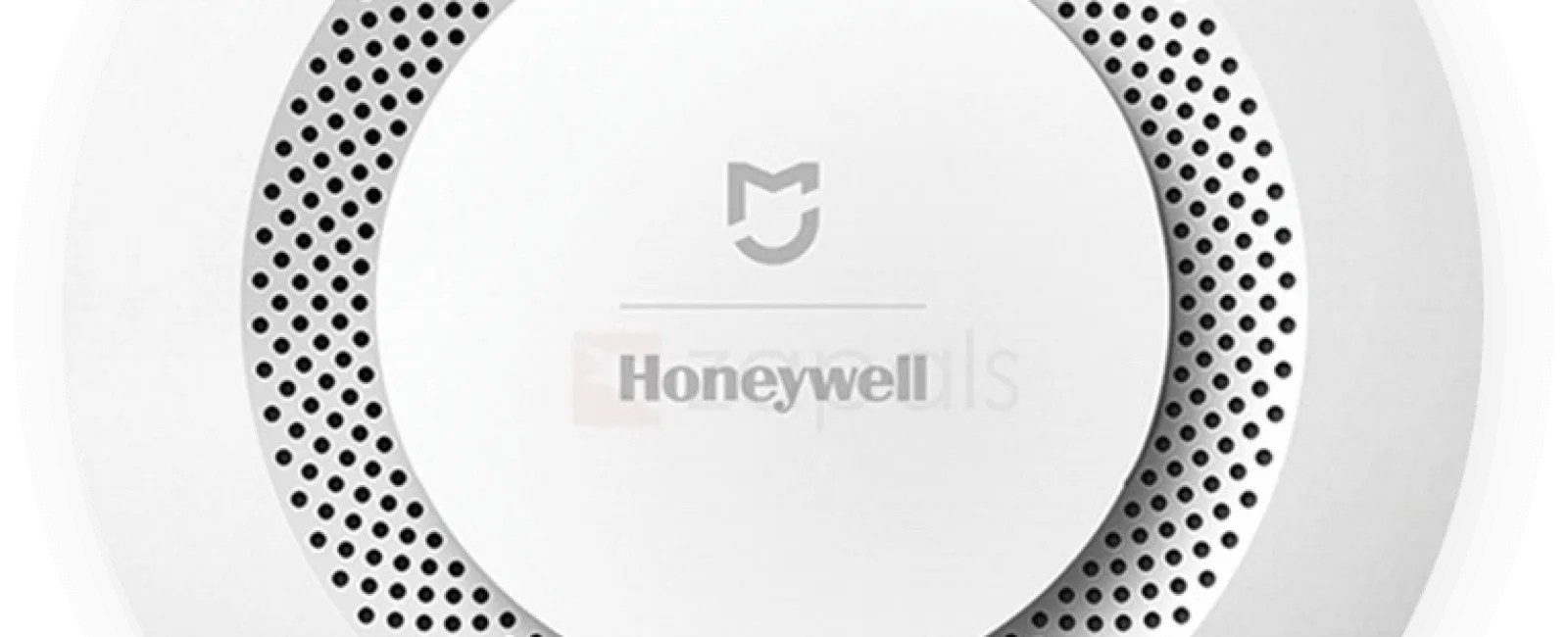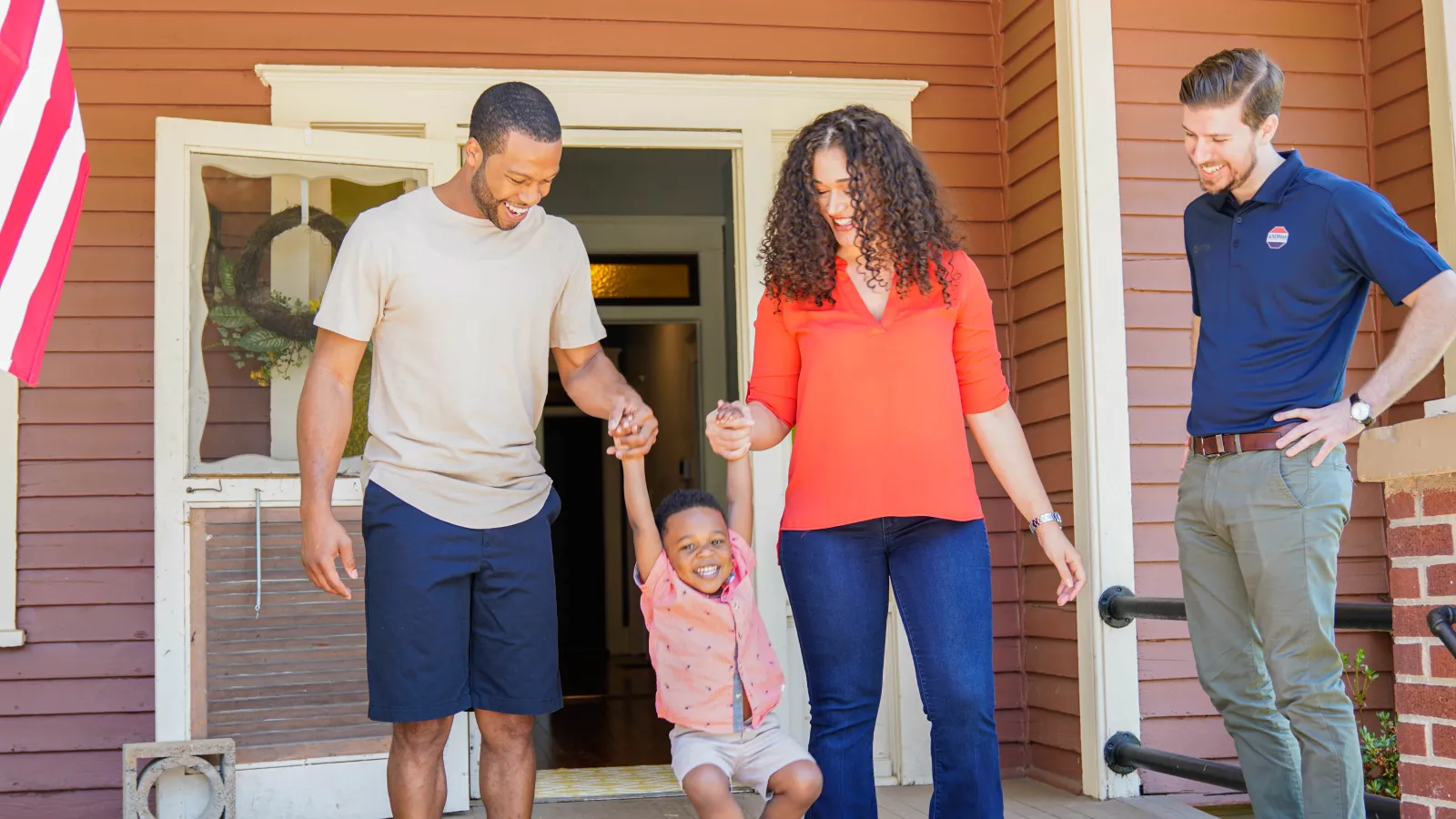As the saying goes, your home should be your haven. But at the end of the day, your home is only as safe as the security and safety systems you've chosen to protect your family and possessions.
To help you create a comprehensive and reliable home safety system, we'll walk you through the following safety alarms available on the market today:
- Smoke detectors
- Carbon monoxide detectors
- Flood sensors
- Medical alert systems
Ackerman Security is Atlanta's trusted leader in home security protection. We can help you choose high-quality security products and we provide the most reliable monitoring servicesin our area. If you're looking for a reliable security system company and want peace of mind that your home is safeguarded by the best, call us at 800.552.1111 or schedule an instant security quote online.
Smoke Detectors

Most states require residential homes to have smoke detectors installed.
First off, most states require residential dwellings to have smoke detectors installed. That said, it's likely that your home already has smoke detectors of some kind. However, not all smoke detectors are as reliable as others. There are different types of smoke detectors designed to detect different types of fire or smoke events.
So, it's worth assessing whether or not your current smoke detectors are truly protecting you as well as they should be.
In this section, we'll walk you through the different types of smoke detectors, how they differ, and which ones are right for you and your family. First, let's look at where you should install smoke detectors and how and when to test and replace them.
Placement & testing
According to the National Fire Protection Agency, you should install smoke detectors:
- Inside each bedroom
- Outside each sleeping area
- On every level of the home, including the basement
- At least 10 feet from a cooking appliance
- High on walls or ceilings (they should not be installed more than 12 inches from the ceiling if on the wall).
Note: Every state/town varies in its smoke detector requirements. Check your local regulations for more detailed information on where you should install smoke detectors in your home.
Other installation/safety tips:
- Don't install smoke detectors near windows, doors, or air ducts where drafts might impede their ability to detect smoke
- Don't paint or cover smoke detectors as this can prevent them from working properly
How and when to test your smoke alarms:
- Test your smoke alarms once a month
- To test smoke detectors, simply press the "Test" button on the detector to ensure it sounds an alarm.
- If the alarm does not sound when you press the "Test" button, replace the batteries and test again or consider replacing the detector completely. Smoke detectors typically need new batteries every year. If replacing batteries, make sure to use a battery that is listed on the manufacturer's instructions. Using a different brand or model of the battery can prevent the smoke detector from working properly.
If replacing the smoke detector, read on for more information on the type and features of smoke detectors to choose from. Smoke detectors are designed to last up to 10 years depending on the make and model, but some may need to be replaced well before this. For more information on when to replace your smoke detectors, read our blog, "2 Signs You Need New Smoke Detectors ASAP".
Types of Smoke Detectors
Generally speaking, there are three distinct types of smoke detectors:
- Ionization.These types of smoke detectors are better and faster at detecting flaming fires.
- Photoelectric. These types of smoke detectors are better and faster at detecting smoldering fires.
- Combination smoke detectors ("dual-sensor" alarms). These are ionization-photoelectric combination alarms that work well to detect both flaming and smoldering fires. These types of detectors also often come with the ability to detect odorless, toxic carbon monoxide gas.
So which type of smoke detector is best? We always recommend combination smoke detectors. Since no one can predict which fire might start in your home (smoldering vs. flaming), it's best to choose a device that can detect both quickly and accurately. We also recommend finding a combination smoke detector that also provides carbon monoxide detection.
Another item to consider is that, as of 2021, manufacturers are no longer able to make traditional, single-sensor (photoelectric or ionization) smoke detectors. This means that while these detectors are still available to purchase, they are considered obsolete, outdated technology and should be replaced with combination ionization-photoelectric smoke detectors.
Features To Consider
Hardwired vs. battery-only
Our suggestion:Always opt for a smoke detection system that is hardwired vs. battery-only.
A hardwired smoke detector refers to an entire system of smoke detectors that are interconnected to each other and pull power from your home's electrical system vs. relying solely on battery power. When one smoke detector detects smoke and sounds an alarm, it triggers all other detectors wired into the same circuit to also sound an alarm.
The benefit of a hardwired and interconnected system is that it increases the chance of alerting you and your family to danger. It also prevents the possibility of smoke detectors not working correctly due to low or dead batteries.
UL stamp
Our suggestion:Always choose a smoke detector with a UL label.
A smoke detector with a UL (Underwriters Laboratory) label is a detector that has been tested and passes the Underwriters Laboratory standards for a smoke detector. These standards are written in alignment with nationally-recognized codes, such as the National Electric Code, and ensure that detectors with this label meet, and often exceed, the minimum national standards for safety.
Monitored system
Our suggestion:Always opt for a monitored fire/smoke alarm system rather than an unmonitored one.
A monitored smoke alarm system means that whenever a smoke detector goes off in your home, a professional monitoring professional is notified and immediately reacts to get in touch with you. When a true emergency arises, it will dispatch the fire department within seconds.
Having a monitored system means truly protecting yourself, your family, and your home from a fire—even if you're not home to hear the smoke detector- or worse- you're not physically able to call for help due to a dangerous fire.
While a monitored system comes with additional monthly costs, the extra peace of mind and layer of protection provided by a monitored system is priceless.
Carbon Monoxide Detectors

Carbon monoxide detectors provide a powerful layer of protection for your entire family—one that is well worth the low monthly fee associated with monitoring services.
Like smoke detectors, carbon monoxide detectors are required by most states in all new and existing residential dwellings, specifically those with a fuel-burning appliance or attached garage.
However, it's worth checking to ensure that your home is following best practices regarding how many devices are installed, where they are installed, whether they're being properly tested, and whether they have the most advanced safety features available.
Read on for our tips and suggestions for carbon monoxide detectors.
Placement & Testing
According to the EPA (Environmental Protection Agency), carbon monoxide detectors should be placed:
- On walls about 5 feet from the floor or on the ceiling
- On every floor of the house
- Near the sleeping areas
- Near an attached garage (if applicable)
- In the basement (if applicable)
Note: Always check your state or local CO detector requirements, as they may exceed national requirements.
Other placement tips:
- Do not place next to a fireplace or flame-producing appliance
- Keep the detector out of the way of pets or children
- Never decorate or cover the detectors as this will prevent them from working properly
How and when to test your CO detectors:
- For basic testing, once a month, press the "Test" button on the CO detector. If the device is working properly, a loud piercing siren should sound after a few seconds.
- When testing, have people in other rooms of the house make sure you can hear alarms from every room. If the noise is not audible from all areas of the house, you need to replace the batteries or the device itself.
Types
Carbon monoxide detectors differ in the kind of sensors they use:
- Electrochemical sensorswork by sensing the changes in electrical currents when carbon monoxide is present.
- Biomimetic sensorscontain a special gel that changes color when it absorbs carbon monoxide. When the gel changes color, this triggers the alarm.
- Metal oxide semiconductors use a silica chip that lowers their electrical resistance in the presence of carbon monoxide, which triggers an alarm.
Different brands and models will employ various kinds of CO detectors. Because all 3 offer relatively the same level of reliability and accuracy, it matters less which type of sensor the CO detector uses. Instead, more emphasis should be placed on how sensitive the detector is. We suggest choosing a detector that can provide warnings when the CO levels are at or just above 6 ppm (CO concentration is measured in parts per million or "ppm"). While this is considered a relatively "low" level, it is important to know that breathing in lower levels of CO for long periods can result in negative physical side effects, similar to symptoms of food poisoning and the flu.
Features To Consider
Dual vs. single function CO detectors
Our suggestion:Always opt for a dual function or "combination" CO detector.
"Dual-function" carbon monoxide detectors are built to sense the presence of both smoke and CO. While single-function CO detectors exist, it's always better to double up on the kinds of threats that a single device can detect and protect against.
Digital display CO detectors
Our suggestion: Invest in a digital CO detector if you have high-risk individuals in your home.
CO detectors that come with digital displays show the levels of CO on a digital screen for quick viewing. These detectors can make it easy for you to quickly respond even when levels are relatively low and may not trigger an audible alarm. High-risk individuals can be extremely sensitive to even very low levels of CO. Having a digital display to help assess threat levels can be crucial when protecting these individuals.
These detectors also often come with other features such as reminders for maintenance, warning when battery levels are low, etc.
Hardwired detectors
Our suggestion: When possible, opt for an interconnected, hardwired CO and smoke detection system.
Hardwired detectors require special wiring, usually performed by a professional during the build or renovation of the house. These detectors are typically more reliable because they do not stop working when batteries are dying or dead. Hardwired carbon monoxide detectors can also be interconnected, meaning all detectors in a home will go off even if only one unit senses carbon monoxide. This increases the speed of response in the event of an emergency. Hardwired detectors also have built-in backup batteries that take over in the event of a power failure.
When an interconnected and hardwired system is not available, consider installing battery-operated or plug-in detectors. Plug-in detectors are plugged into an outlet and receive power from your home's electrical system. Just like hardwired detectors, plug-in detectors also have a backup battery that takes over in the event of a power outage.
Monitored CO detectors
Our suggestion: Always opt to have your CO detection system monitored.
It's essential that you fully understand that CO detectors by themselves simply alert you of danger but do not protect you from it. However, a monitored system goes one step further by immediately alerting a professional monitoring company that your home and family is in danger. From there, a trained professional will assess the situation and dispatch an ambulance if needed.
This provides a powerful layer of protection for your entire family—one that is well worth the low monthly fee associated with monitoring services.
Flood Sensors
Floor and water sensors, also called water leak detectors, trigger an alarm when it detects the presence of water. Many homeowners opt to install these types of devices in areas where the presence of water could go unnoticed for long periods of time.
These sensors can help detect leaks early, minimizing water damage and the cost of repairs.
Types of Flood and Water Sensors
There are two main types of flood/water sensors:
- Active alarmsare installed in the water system itself (e.g., added to water pipes or water pumps). When this kind of sensor is triggered, it sounds an alarm but can also automatically shut off the water supply to the associated pipe/appliance. These types of sensors are typically more expensive to install than passive alarms.
- Passive alarmsare installed next to the appliance or area. Once the sensors are wet, it sounds an alarm but does not automatically shut off the water supply. Instead, you will need to turn off the water supply manually. Most passive alarms are battery-operated and will need to be checked/tested at least once a month. These alarms are typically cheaper to install than active alarms.
Placement of Flood/Water Sensors
You may consider adding flood sensors/water leak detectors in the following places:
- Areas/rooms with water heaters
- Areas/rooms with washing machines
- Basements/attics
- Areas next to or around sump pumps
- Water pipes
- Garages
- Etc.
Features To Consider
Multifunctional sensors
Our suggestion:Make sure your flood sensor can detect moisture, water, and temperature.
Phone/text alerts
Our suggestion: Opt for a monitored system so that a professional company is notified when sensors are triggered and can contact you immediately. These systems will also often send you automatic alerts on your phone. This is especially important for homeowners who are not always on location and may not hear an audible alarm. Having a live professional reach out can help you make decisions and get help onsite fast if you are not on the premises.
Medical Alert Systems
Medical alert systems are devices that are either worn or installed in the home. These devices allow those who use them to get help quickly when an emergency arises. Whether the system is monitored or unmonitored, these devices either directly contact 911 services when triggered or notify a professionally-staffed, 24/7 communication center who can assess whether the situation is an emergency and dispatch emergency medical services if needed and contact loved ones.
While most medical alert systems are installed/implemented for those who are elderly, other individuals who might need a medical alert system could include:
- Those who have high-risk medical conditions
- Those who take medications with side effects
- Those who live alone and experience anxiety about getting help when needed
Types of Medical Alert Systems
When it comes to medical alert systems, the most important differentiation is between:
- Monitored medical alert systems. When triggered, monitored alert systems immediately notify a 24/7 call center with trained professionals who assess the situation, dispatch emergency services if needed, and contact loved ones to keep them updated on why and when the alert system was triggered.
- Unmonitored medical alert systems. When triggered, unmonitored medical alert systems can connect directly to either 911 and specified loved ones but do not connect to a 24/7 communication center. These systems often do not offer advanced capabilities that monitored systems offer.
Features To Consider
Medical alert systems can come in many different forms, makes, and models. And different systems offer different features. You'll want to consider the features based on your specific needs. You'll also want to keep in mind that more features come with higher costs.
Some features to consider include:
- Fall detection
- Activity tracking
- Medication reminders
- Wellness checks
Have More Questions About Home Safety Alarms?
At Ackerman, we know home safety alarms systems like the back of our hands. Our trained professionals can provide expert advice and the installation of almost any type of alarm system. Also, we specialize in 24/7 professional monitoring to ensure that you get an extra layer of round-the-clock protection for peace of mind.






